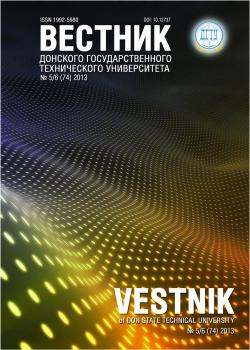The subject of this investigation is the methods of switched reluctance motors controlling. The study objective is to review the existing methods of reducing shaft electromagnetic torque ripple in the switched reluctance motors. A comparative analysis of the existing approaches to valve drives control systems development is used to classify the electromagnetic torque control methods. The study results can be used when selecting the drive control method providing a balance between the complexity of the control system implementation and its effectiveness. On the basis of the comparative analysis, the conclusions on the neural network torque control systems effectiveness with offline learning are made; the control system enhancement using co-energy magnetic drive system as well as the inclusion of the residual magnetization material effects in the model is marked. It is noted that the existing systems aligning the magnetization of the actuator materi-als reduce the average torque for the work cycle.
switched reluctance motor, production ma-chine, method of reducing torque ripple, slow and creep speed, executive mechanism, mathematical model, modeling.
Создание современных технологических машин (ТМ), включая промышленные роботы (ПР) широ-кого назначения, сопряжено с выбором привода и оценкой его технических возможностей — например, для реализа-ции особых режимов работы электропривода и обеспечения нормативов технологического процесса. В настоящее время ведутся поиски схемотехнических решений по управлению вентильно-индукторным двигателем (ВИД). Исследуются возможности его применения в электроприводах промышленных роботов (ПР), другом технологическом оборудовании (ТО), станочных и робототехнических системах (РТС). Известно [1, 2], что особенностью в работе упомя-нутых электроприводов является обеспечение повторно-кратковременных режимов и поддержание равномерности вращения (перемещения) исполнительного механизма (ИМ) рабочего органа (РО) в зоне малой скорости. При ряде хороших технических показателей ВИД и универсальности известных схем управления ими [3] существует некоторая проблема целевого применения таких двигателей в ТМ из-за наличия пульсирующих моментов на валу в зоне малой скорости перемещения ИМ. По мнению авторов, поиск приемлемого решения возможен. Он должен базироваться на взаимосвязи всех составляющих ТМ: механических, электрических, информационных, в целом определяющих технические характеристики и работоспособность ТМ. Решение задачи повышения равномерности движения и стабильно-сти позиционирования ИМ с электроприводом на базе ВИД является важнейшим ориентиром при выборе электропри-вода ТМ, способного программно работать с заданными характеристиками в зоне низких и ползучих скоростей дви-жения ИМ.
1. Karnaukhov, N.F., Filimonov, M.N., Statovoy, D.A. Korrektsiya mekhanicheskikh kharakteristik chastotnogo elektroprivoda tekhnologicheskikh mashin v zone maloy skorosti dvizheniya ispolnitel´nogo mekhanizma. [Correction of mechanical characteristics of the production machine variable-frequency drive in the low velocity zone of the actuator movement.] Nauka, tekhnika i tekhnologiya KhKhI veka (NTT-2013): mat-ly V mezhdunar. nauch.-tekhn. konf. [Science,processes and technology of the XXI century (NTT-2013): Proc. V Int. Sci.-Eng. Conf.] Kabardino-Balkarian State University, Nalchik, 2013, p. 433 (in Russian).
2. Karnaukhov, N.F., Dzayan, G.V., Rusin, N.V. Matematicheskaya model´ ventil´no-reaktivnogo dvigatelya mekhatronnoy sistemy pri odnoimpul´snom pitanii. [Mathematical model of valve-jet engine of mechatronic system at single-pulse power supply.] Matematicheskie metody v tekhnike i tekhnologiyakh (MMTT-21) : sb. tr. XXI mezhdunar. nauch. konf. [Mathematical Methods in Engineering and Technology (MMTT-21): Proc. XXI Int. Sci. Conf.] Saratov, 2008, sections 9, 14, vol. 7, pp. 25-27 (in Russian).
3. Petrushin, А.D., Ilyasova, E.E. Otsenka vliyaniya neravnomernosti vozdushnogo zazora na velichinu sil odnostoronnego prityazheniya rotora k statoru ventil´no-induktornoy elektricheskoy mashiny.[Evaluation of air gap unevenness influence on magnitude of forces of one-way pull of rotor to the stator of valve-inductor of valve-inductor electrical machine.] Vestnik VELNII, 2011, no. 2, pp. 84-93 (in Russian).
4. Suryadevara, R., Fernandes, B.-G. Control techniques for torque ripple minimization in switched reluctance motor: An overview. IEEE 8th International Conference on Industrial and Information Systems: conf. proc. Peradeniya, 2013, pp. 24-29.
5. Mousavi-Aghdam, S. R., Sharifian, M.-B.-B., Banaei, M.-R. A new method to reduce torque ripple in switched reluctance motor using fuzzy sliding mode. Iranian journal of fuzzy systems, 2012, vol. 9, no. 1, pp. 97-108.
6. Divandari, M., Dadpour, A. Radial force and torque ripple optimization for acoustic noise reduction of SRM drives via fuzzy logic control. 9th IEEE/IAS International Conference on Industry Applications - INDUSCON 2010. Sao Paulo, 2010, pp. 1-6.
7. Srinivas, P. DTC of switched reluctance motor drive using simplified torque equation. International Journal Of Advanced Research In Electrical, Electronics And Instrumentation Engineering, 2015, vol 4, no. 1, pp. 92-95.
8. Ro, H.-S., et al. Torque Ripple Minimization Scheme Using Torque Sharing Function Based Fuzzy Logic Control for a Switched Reluctance Motor. Journal of Electrical Engineering & Technology, 2015, vol. 10, no. 1, pp. 118-127.
9. Xue, X.-D., Cheng, K.-W.-E., Cheung, N.-C. Evaluation of torque sharing functions for torque ripple minimiza-tion of switched reluctance motor drives in electric vehicles. Power Engineering Conference. Sydney, 2008, pp. 1-6.
10. Ilic-Spong, M. et al. Feedback linearizing control of switched reluctance motors. IEEE Transactions on Automatic Control, 1987,vol. 32, no. 5, pp. 371-379.
11. Bae, H.-K., Krishnan, R. A novel approach to control of switched reluctance motors considering mutualinductance. IEEE Industrial Electronics Conference. Nagoya, 2000, vol. 1, pp. 369-374.
12. Panda, S.-K., Dash, P.-K. Application of nonlinear control to switched reluctance motors: a feedback linearisation approach. IEEE Proceedings - Electric Power Applications, 1996, vol. 143, no. 5, pp. 371-379.
13. Lovatt H.-C. A flux controller that improves drive system performance by accounting for magnetic circuit saturation. Power Electronics and Applications : Fifth European Conference. Brighton, 1993, pp. 163-167.
14. Barrass, P.-G., Mecrow, B.-C. Flux and torque control of switched reluctance machines. IEEE Proceedings - Electric Power Applications, 1998, vol. 145, no. 6, pp. 519-527.
15. Petrushin, А.D., Tchavychalov, M.V. Bezdatchikovyy pusk ventil´no-induktornykh elektricheskikh mash-in. [Sensorless start of switched reluctance electric machines.] Vestnik RGUP, 2012, no. 3, pp. 34-38 (in Russian).
16. Castro S.-J., Andrada G.-P., Blanqué M.-B. Minimization of torque ripple in switched reluctance motor drives us-ing an enhanced direct instantaneous control. International Conference on Electrical Machines. Marsella, 2012, pp. 1021-1026.





